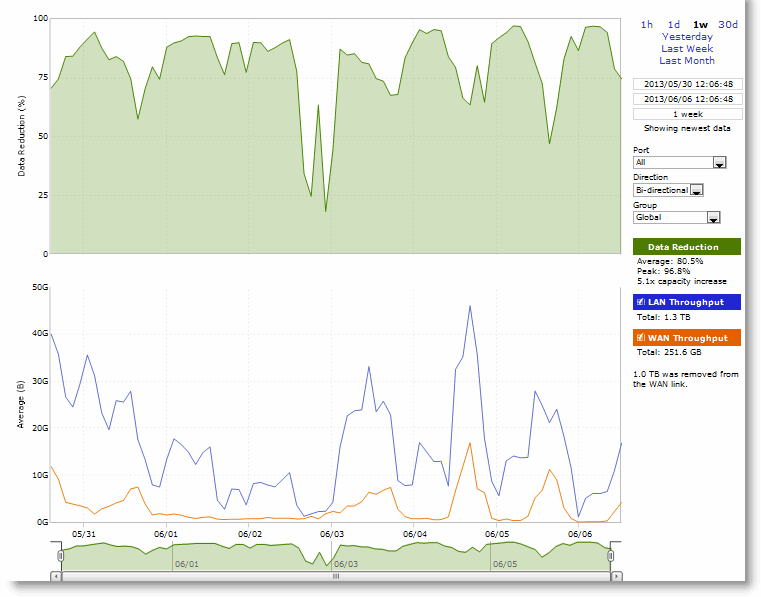Figure: Bandwidth Optimization Report

Data Series | Description |
Data Reduction % | Displays the peak and total decrease of data transmitted over the WAN, according to this calculation: (Data In – Data Out)/(Data In) Displays the capacity increase x-factor below the peak and total data reduction percentages. |
WAN and LAN Throughput | Depending on that direction you select, specifies one of the following: • Bi-Directional - traffic flowing in both directions • WAN-to-LAN - inbound traffic flowing from the WAN to the LAN • LAN-to-WAN - outbound traffic flowing from the LAN to the WAN |

Control | Description |
Time Interval | Select a report time interval of 1 hour (1h), 1 day (1d), 1 week (1w), 30 days (30d), yesterday, last week, or last month. Time intervals that do not apply to a particular report are dimmed. For a custom time interval, enter the start time and end time using the format YYYY/MM/DD HH:MM:SS. Because the system aggregates data on the hour, request hourly time intervals. For example, setting a time interval to 08:30:00 to 09:30:00 from 2 days ago does not create a data display, whereas setting a time interval to 08:00:00 to 09:00:00 from 2 days ago will display data. When you request a custom time interval to view data beyond the aggregated granularity, the data is not visible because the system is no longer storing the data. For example, the following custom time intervals do not return data because the system automatically aggregates data older than 7 days into 2-hour data points: • Setting a 1-hour time period that occurred 2 weeks ago. • Setting a 75-minute time period that occurred more than 1 week ago. You can quickly see the newest data and see data points as they are added to the chart dynamically. To display the newest data, click Show newest data. |
Port | Select a port or select All to view all ports from the drop-down list. The list appends the port name to the number where available. |
Direction | Select a traffic direction (Bi-Directional, WAN to LAN, or LAN to WAN) from the drop-down list. |
Group | Select the group from the drop-down list. |